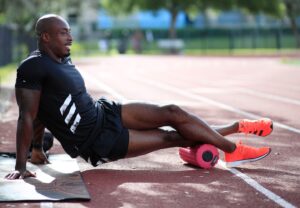Is Active Recovery Better Than Rest?

Recovery is an essential part of any fitness journey. Whether you’re a professional athlete or a casual gym-goer, understanding how to properly recover from exercise can significantly impact your performance, endurance, and overall well-being. One debate that often surfaces in the fitness world is whether active recovery is better than rest. In this article, we will dive deep into the nuances of both recovery methods to determine which is better for different individuals and circumstances.
Understanding Active Recovery
What is active recovery? Active recovery refers to engaging in low-intensity activities following strenuous exercise. Instead of completely stopping physical activity, active recovery encourages movement, which can facilitate better circulation, muscle repair, and overall healing. Activities such as walking, swimming, or practicing yoga are common examples of active recovery exercises.
Types of active recovery activities:
- Walking: Engaging in short, brisk walks after intense workouts.
- Swimming: A low-impact exercise that soothes muscles.
- Cycling: Light cycling for cardiovascular improvement and muscle relaxation.
- Stretching and Yoga: These practices enhance flexibility and reduce muscle tension.
What is Rest in Recovery?
Definition of rest Rest, or passive recovery, involves minimal or no physical movement. It focuses on allowing the body to recover naturally without further physical stress, promoting cellular repair and energy replenishment.
Benefits of passive recovery:
- Reduces inflammation
- Replenishes energy stores (glycogen)
- Improves mental rest and relaxation
- Helps with recovery from injuries
Key Differences Between Active Recovery and Rest
Physical and mental differences Active recovery maintains light physical movement, increasing blood flow and helping the body heal while keeping it engaged. Rest, on the other hand, is completely passive and often leads to full relaxation. Mentally, active recovery can feel more rejuvenating as it prevents stiffness and promotes circulation.
Comparing recovery outcomes When comparing outcomes, both active recovery and rest have their merits. Active recovery speeds up the process of clearing lactic acid and aids in muscle repair, while rest gives your body time to restore energy reserves and repair tissue damage without any physical exertion.
Physiological Benefits of Active Recovery
Increased circulation One of the main physiological benefits of active recovery is enhanced blood circulation. Gentle movement helps to pump oxygen and nutrients into muscles, aiding faster repair.
Muscle repair and growth Active recovery encourages muscle repair by reducing stiffness and promoting muscle tissue regeneration, particularly after weightlifting or high-intensity cardio sessions.
Improved flexibility Consistent active recovery, such as yoga or light stretching, can enhance overall flexibility, reduce soreness, and prevent muscle tightness.
Psychological Benefits of Active Recovery
Mental health improvements Engaging in light physical activity can release endorphins, which improve mood and reduce stress. This is particularly beneficial when an individual feels mentally drained after a tough workout.
Stress reduction Active recovery promotes relaxation, allowing the body to ease into its natural repair cycle while maintaining a sense of accomplishment and relaxation.
Enhancing motivation Many people find active recovery to be more motivating than complete rest. Light activity keeps them connected to their fitness routine and lessens the chances of feeling lethargic.
When to Use Active Recovery
Post-exercise recovery Active recovery is ideal for post-exercise sessions, especially after high-intensity interval training (HIIT) or weightlifting. Engaging in light physical activity can help reduce muscle soreness and stiffness.
During rehabilitation For individuals recovering from injuries, active recovery is crucial in the early stages of rehab. Light exercises can prevent muscle atrophy while promoting healing.
Long-term fitness goals For those with long-term fitness ambitions, incorporating active recovery into weekly routines can enhance overall performance, endurance, and strength.
When to Use Rest
Preventing overtraining Rest is critical when you feel physically and mentally exhausted from intense workouts. It allows your body to heal and prevents overtraining.
Enhancing recovery from injury or illness If you’re injured or feeling under the weather, rest is essential to avoid aggravating the condition and to promote faster recovery.
Scientific Studies Supporting Active Recovery
Research insights on active recovery benefits Numerous studies highlight the benefits of active recovery. Research shows that active recovery helps in reducing lactic acid build-up, improving circulation, and enhancing flexibility, all of which contribute to quicker recovery times.
Performance improvements Athletes who engage in active recovery report better endurance and overall performance, particularly in sports requiring repeated high-intensity efforts.
Studies Supporting Rest in Recovery
The role of rest in professional athletics Many professional athletes and sports organizations advocate for the inclusion of rest days to optimize performance and prevent injuries.
Studies showing the necessity of passive rest Research indicates that rest is essential for muscle regeneration and preventing overuse injuries. Rest allows the body to repair damaged tissues and rebuild energy reserves.


